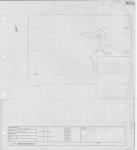Interpretation
-
- 3117 is part of the pavement preparation system for (3035)= (3058) = (3019) = (3100) in the east side of the chapel.
-
- Megan McNamee
- 22-6-2007
Stratigraphic Relationships
- No Linked Records
Site Photo
- No records attached.
Description
- color, composition, consistency
- trowel
- N-S: 1.75 m; depth: 0.04 m; E-W: 2.10 m (variable)
- clay
- pale pinkish gray speckled with black, white, and orange
- stiff
- partial loss
- artificial
- pebbles, carbon, stones and orange clay
- bone fragments, carbon flecks
- plaster bits, glass fragments and worked marble, along with fragments of colored marble (purple porphyry and serpentina)
- Pink clay layer in eastern area of chapel with some marble and stone inclusions. The layer is a fairly regular thickness.
- Where this layer covers cement layer 3128, it's size and thickness is much reduced, whereas in areas where it sits on 3125 (a brown dirt layer) it is very well preserved. This is due to the fact that the clay sticks to the dirt, but peels quite easily from the cement. It is likely that it shared the same limits as 3076. Traces of both 3076 and 3117 were found on the exposed cement 3107, but were no longer apparent at the time of excavation. Cut marble paving stones found in the NE area of the chapel may be in situ and related to 3107, 3117, 3128, 3076.
- high
Ceramic Inventory
- 1200 AD - 0 AD
- Forse una vetrina sparsa. Non definibile con precisione ma terine post quem al XIII secolo
| Total fragments | |
|---|---|
| 1 | |
| 8 | |
| 1 |
Basic Information
- Pink clay pavement preparation layer in E side of chapel
Plan
Record Details
-
- Lisa Fentress
-
- Caroline Goodson
- 11-6-2007
- Megan McNamee
- 21-6-2007
